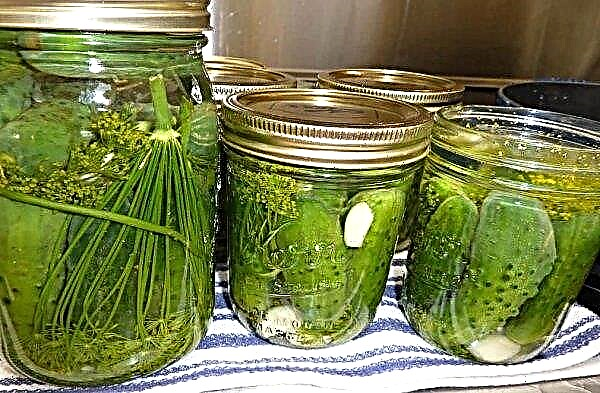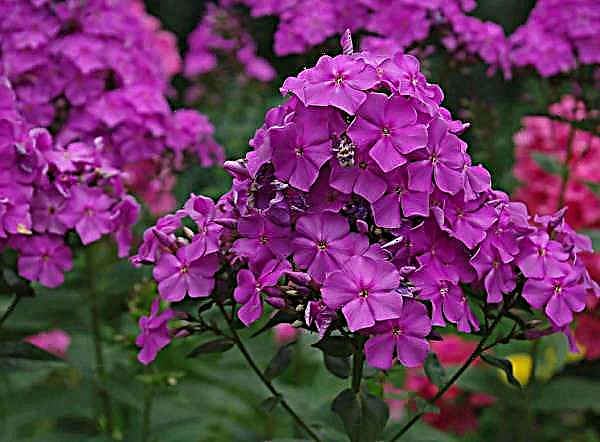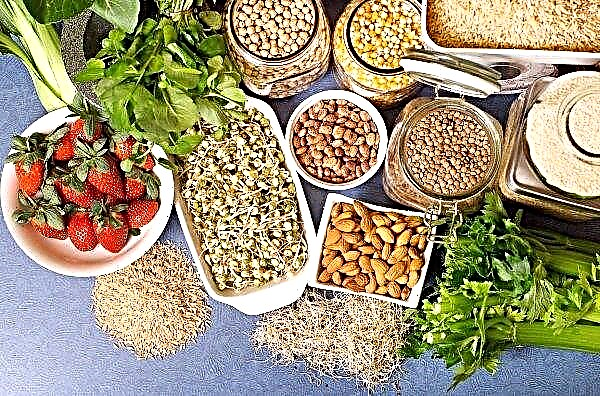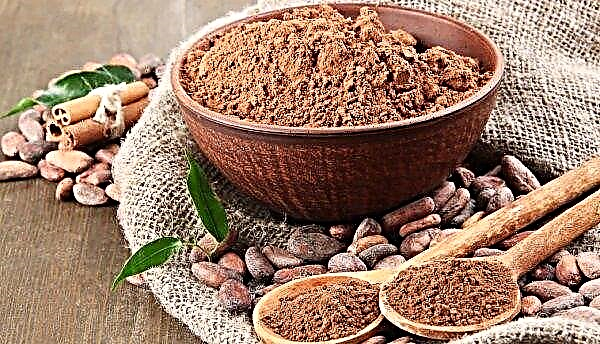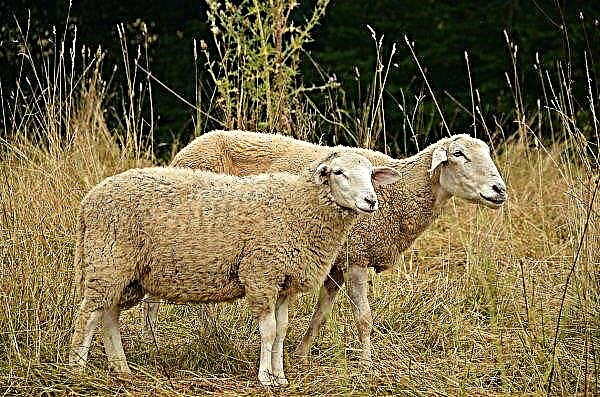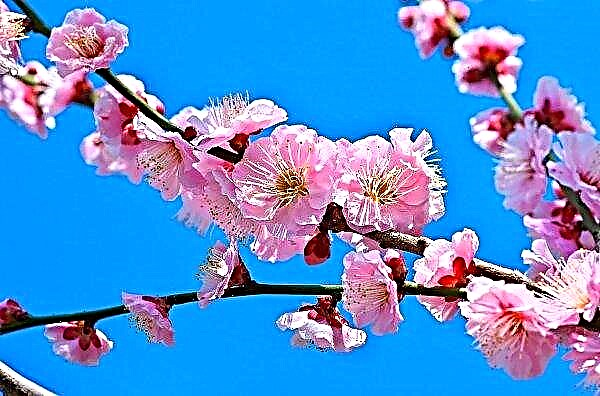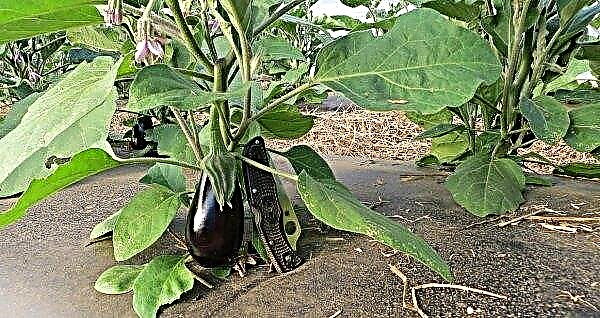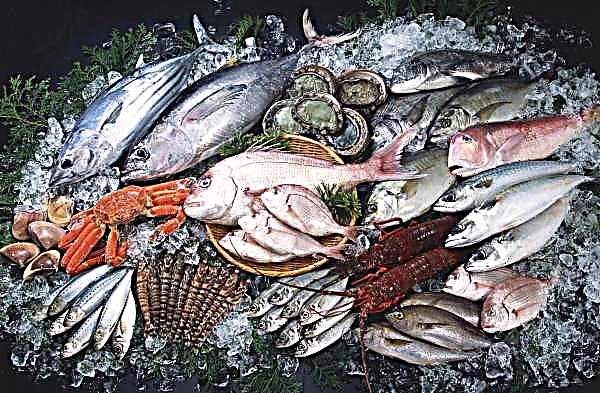To have a house in the forest is the dream of every city dweller. However, acquiring such a plot is quite difficult, so those who already have a summer cottage often try to create at least a small forest corner on its territory where you can relax and fully immerse yourself in nature. To do this is not as simple as it seems at first glance, but it is quite realistic if you know the main features of the landscape design of the forest. This and much more will be discussed in this article.
The main elements and features of creating a site in a forest style
When starting to arrange a forest-style suburban area, first develop a project. When planning, immediately consider the locations of all functional areas and construction sites, from the home to the playground. This is necessary in order to immediately determine where and which plants can develop well.
Did you know? Coniferous plants secrete volatile — substances that destroy pathogens, so in a dense forest the air is almost sterile.
The main task when designing a site in a forest style is to correctly plant the plants in order to ensure favorable conditions for each of them. Try not to plant tall trees closer than 5 meters to the building. This is especially true for crops with a superficial root system, such as spruce. During the construction process, their roots will be injured and the trees may die.
If you have acquired a plot on the territory of the forest and plan to slightly clear it, try not to remove all low vegetation. In the wild, a certain microclimate has already been created in which cultures interact well, so you should not globally destroy what is created by mother nature. Such gross interference can lead to the death of some cultures.

You probably will not be able to grow lawn grass in the forest area, which, in principle, is not necessary, because there is already its own flower and grass cover from forest plants, such as ferns, lunatics, loosestrife, strawberries, etc. Take a look around and identify the empty areas - they can be decorated with perennials and shrubs, thereby adding accents to the design.
In shaded corners, euonymus, elderberry, frankincense, bought well, and in sunny glades - barberry, lilac, dolphinium, iris, etc. A garden with a forest should be filled with natural flowers as much as possible. Emphasis can be made in separate areas, for example, to organize a flower garden in a sunny meadow near the house, at the main entrance or in the backyard.
Paths in the forest area are best made from natural materials. First, a gravel-sand base is arranged on which stone slabs, wooden saw cuts can be laid (larch wood is especially durable), granite screenings or ceramic chips. Now decorative wood chips have gained considerable popularity. The material has many shades, due to which it is used both as a mulch and for the design of tracks. It is better that the sliver has calm tones, for example, chocolate or dark beige - so the forest paths will look natural.
 It is desirable that on the site in a forest style, all objects were made of natural materials: the pond or swamp fencing - of stone, and bridges, benches, arbors, carved sculptures - of wood. Bright colors are useless here, they can be present in the form of separate flowering shrubs or mini-beds of logs and stumps.
It is desirable that on the site in a forest style, all objects were made of natural materials: the pond or swamp fencing - of stone, and bridges, benches, arbors, carved sculptures - of wood. Bright colors are useless here, they can be present in the form of separate flowering shrubs or mini-beds of logs and stumps.
Forestry arrangement options
There are several basic options for creating a forest zone. Most often, the design is designed to design the entire site, but if you wish, you can assign only one or several garden areas to it, combining them with other styles. Each of the methods is beautiful in its own way, so the choice will depend on your personal preferences, as well as the size of the summer cottage.
Did you know? One of the 10 most unusual landscapes in the world created by nature is the Chocolate Hills in the Philippines. On the territory of. Bohol is located 1770 elevations of the same shape, color reminiscent of the confectionery, in whose honor they are named.
Wild forest
The easiest way to arrange a wild forest on a site that is itself located in a wooded area. Minimum intervention will be required from the owners, since nature itself has put everything in its place. Of course, adjustments will have to be made, because you will need to allocate space for the construction of houses and farm buildings. The rest of the landscape can only be cleaned slightly by sprinkling heavily thickened areas, removing rotten stumps and damaged plants.
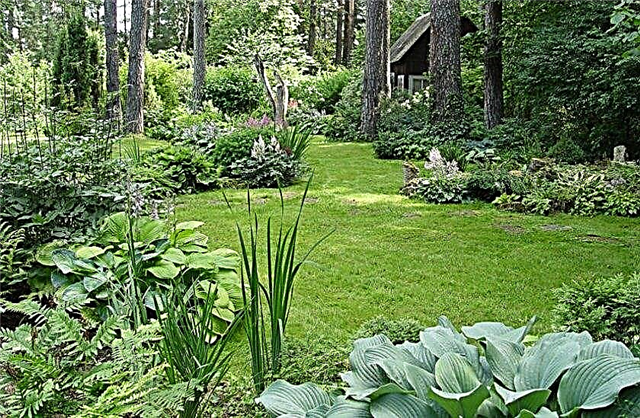
To ennoble the site, you should pave the paths, arrange benches, perhaps build a gazebo using only a wooden base. The territory of the wild forest can be used not only for beauty and pacification, but also to good use. For example, in one of its corners to take a place under the garden. But the garden is not ordinary, but apothecary, on which to plant a variety of medicinal herbs
Shadow garden
Unlike the thicket, in the garden there are fruit and ornamental crops. Bushes with beautiful leaves or lush flowering, perennial plants are appropriate here, you can find a place to decorate flower beds, flower beds or create more interesting landscape compositions, such as rockeries, alpine slides, artificial waterfalls, etc.
 Paths and lanterns must be lit in the garden in the evening.
Paths and lanterns must be lit in the garden in the evening.
But do not forget that the design of the site in the forest style can not do without conifers, with which you can endow the garden with shady corners. Planting from spruce, pine, thuja is often organized in remote areas. You can add forest shrubs to them, and plant ground cover plants. If there is a small building nearby, a winding vine will decorate it.
Single trees
Some owners, acquiring a plot in the forest for construction, almost completely clear it of vegetation, leaving only single trunks of tall trees. Well, such a decision also has a right to exist.
Important! Do not fill the root of the neck with soil — from this, the trees will quickly die.
In this case, you can lay communications, completely change the top layer of the soil cover to fertile soil, and plant lawn grass in it. Such a site will look minimalistic and at the same time neat. Meanwhile, the presence of tall conifers, creating an openwork shadow, will support the idea of forest design.

Another option is not to change the soil cover, but to leave the landscape in its original form with its "native" grassy and flowering plants. To improve the territory, you can plant a meadow from the groundcover in the sunny territory or a patch of moss in the shade.
What plants are suitable for forest design
The main secret of successful forest design is the right choice of plants. Representatives of the flora should at first glance evoke a sense of presence in the forest. The main role, of course, is played by trees, which are planted in arbitrary groups and lay winding paths among them.

To make the landscape look more natural, you should not consider options for planting trendy artsy species or go to extremes, planting tall pine trees (unless your site is vast in size). It is important to adhere to the golden mean - to choose cultivated plants, but as close as possible in appearance to wild cultures.
The site will look much livelier and more diverse if trees with different colors and crown shapes grow on it. From deciduous trees, it can be graceful birches of varieties such as Fastigiata, Yungi, or Purple with a purple crown. Rowan, which does not lose its decorative effect all year round, is also appropriate, because in winter bright red berries remain on it, and large creamy inflorescences bloom in spring. If there is a reservoir on the territory, weeping willow will best decorate its coastline. Maples will look beautiful, especially the compact Flamingo variety, in which the leaves have a pink hue in spring and later become white and white.
Maples will look beautiful, especially the compact Flamingo variety, in which the leaves have a pink hue in spring and later become white and white.
As conifers yew evergreens with a dense crown, which can be easily formed using pruning, will look great. You can also plant a mountain pine, which has small dimensions and looks lovely even without a haircut. To create group plantings, tall conifers, such as Siberian or European cedar, fir and spruce are often used.
Important! When planting ornamental shrubs on forest soil, it is necessary to remove the top layer of the earth, lay the clay layer and fill it with fertile soil.
In addition to the fern, you can pick up other lush shrubs that can reveal their beauty in the shade of tall trees. The following crops will be a good choice: alpine currants, blackberries, holly or fieldfare. A worthy company for them will be fragrant raspberries, which will create low thickets of their arched branches.
 Among shrubs, such a plant acts, of course, fern. Even planted next to any cultural species, it certainly creates the feeling of a forest corner.
Among shrubs, such a plant acts, of course, fern. Even planted next to any cultural species, it certainly creates the feeling of a forest corner.
When choosing decorative shrubs for planting, it is worth paying attention to bird cherry, lilac, spirea, mock up, juniper, euonymus. All these plants will help to effectively transform the forest landscape. With their help, you can give a magnificent volume to landscaping, delimit zones or create a hedge around the perimeter. In addition to trees and shrubs, attention should be paid to grassy and climbing plants. These plants, inconspicuous at first glance, in fact, not only create a background, but are also able to best emphasize the style.
When choosing perennials, you will not be mistaken if you put the cuff. Among a large number of forest crops with a green crown, variegated bushes of this plant will “highlight” the composition from the inside. Such representatives of the flora as hosta, frankincense, periwinkle, astilbe, goryanka, oregano, lemon balm, etc. will perfectly fit into the forest look.
 With the help of vines, such as girl’s grapes, wood pliers or ivy, you can give a certain area a look of light neglect. They are ideal for landscaping the facades of buildings, masking man-made buildings.
With the help of vines, such as girl’s grapes, wood pliers or ivy, you can give a certain area a look of light neglect. They are ideal for landscaping the facades of buildings, masking man-made buildings.
From the ground cover crops, you also need to choose those that will perfectly combine with the forest landscape. Charming compositions can be created with the participation of wild strawberries or duneshen. Among stony structures, saxifrages will look great. You can also plant a tenacity in the forest, violets, epimedium, etc.
How to care for forest design
The main advantage of the forest style is minimal care, since floristic compositions here safely develop and change without human intervention. On a site from evergreen crops you don’t even have to remove leaves, since natural coniferous litter will only add authenticity.
Nevertheless, there are some nuances that require attention. This primarily concerns berry and fruit plants, if any, in the forest garden. They will probably need top dressing and periodic watering. Before planting such plants, carefully read their soil requirements. As for decorative and deciduous and flowering shrubs - many of them need periodic molding pruning.Did you know? Fallen needles can be brewed and used for bathing. Such procedures help to cope with chronic fatigue, neurosis and insomnia.

Any plants, like people, sometimes get sick. Fungal infections can cause great harm, which are easily spread by wind, groundwater, insects, as a result of which a whole site can die. To prevent this, regularly inspect the plants, eliminate damaged areas and burn them. It is recommended to periodically (several times per season) carry out preventive treatment of low-growing crops with insecticides and fungicides, which will prevent the possibility of diseases and attacks of harmful insects.
And do not forget about our smaller brothers. Take care of animals and birds living in the forest, because they store it and protect it from various pests. Make them feeders, help in the cold winter, and they will thank you not only with spring tunes, but also with a beautiful healthy forest.
The design of the site in a forest style, estranged from all fuss, is gaining great popularity today. Nooky cool corners, surrounded by greenery, give an incredible sense of calm and are ideal for relaxation, and simple care rules will be an added bonus.

